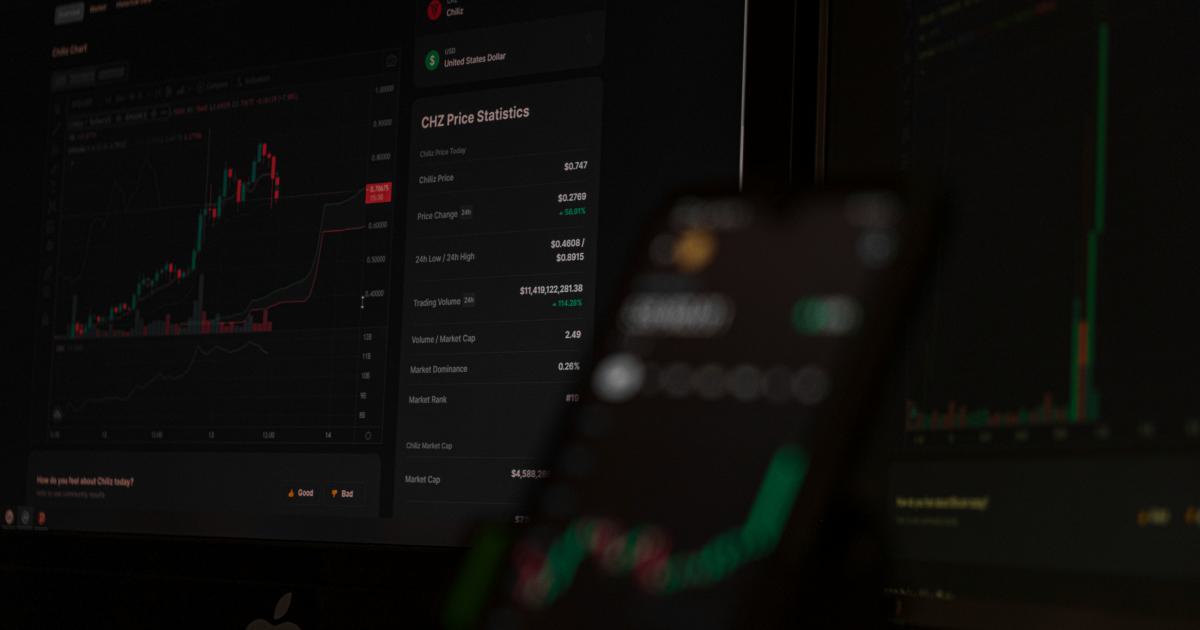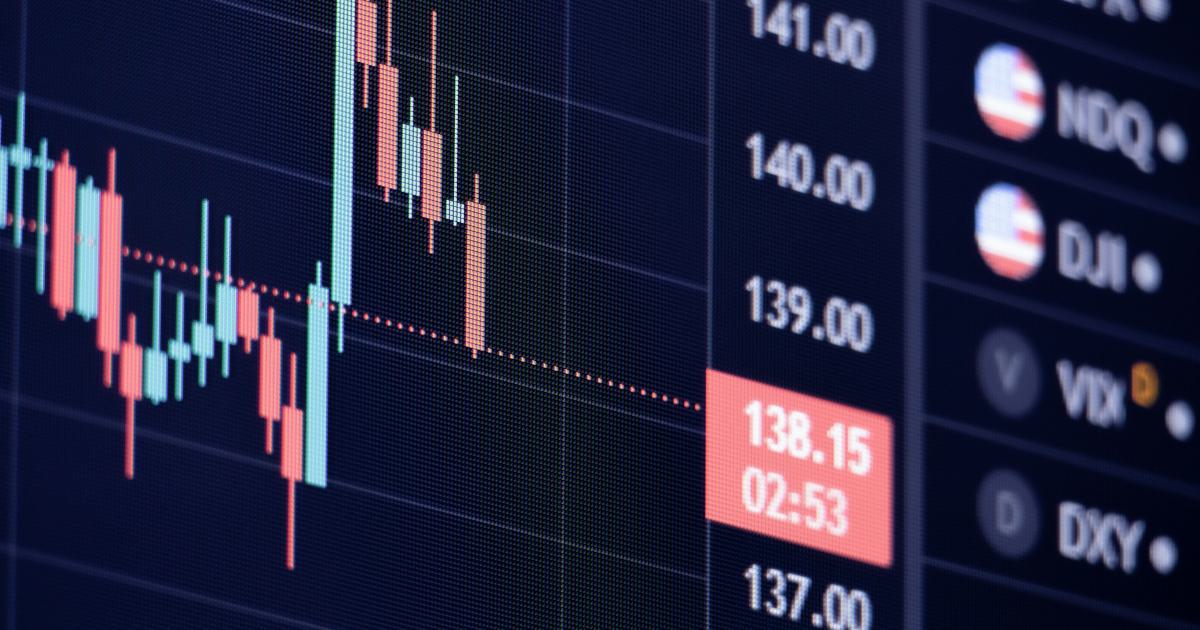The Future of Social Copy Trading Platforms

In today's fast-paced digital economy, social copy trading platforms have emerged as a revolutionary tool for both novice and experienced investors. By leveraging real-time sharing and decision-making, these platforms empower users to mimic the trades of experts, bridging the gap between professional insights and everyday investing. This article delves into the future of social copy trading platforms, exploring their background, current trends, potential challenges, and real-world applications to understand how this innovative technology is reshaping financial markets.
With the rapid evolution of online trading and the democratization of investment strategies, the era of isolated trading is quickly fading. Instead, traders are increasingly turning to community-based approaches that not only offer transparency but also foster a collaborative environment. As we navigate through this detailed exploration, we will examine key trends, technological innovations, regulatory shifts, and user dynamics that promise to define the future of these platforms.
Introduction
The rising prominence of social copy trading platforms is transforming the landscape of traditional investing. These platforms allow individuals to connect, share strategies, and execute trades based on the actions of seasoned investors in real time. This fusion of social networking with trading has created a dynamic space where transparency and collaboration drive smarter decision-making.
Why are social copy trading platforms the future of investing? The answer lies in their unique ability to merge collective intelligence with cutting-edge trading technologies. By providing a space where proven trading strategies are accessible to a wider audience, these platforms democratize investment decisions, reduce barriers to entry, and enable a more informed trading approach. This trend not only supports individual growth but also fosters a vibrant, interactive trading community.
"Investment is no longer a solitary endeavor; it is a collaborative journey built on shared insights and collective expertise."
In this article, we will provide a comprehensive overview of the current landscape, emerging trends, technological advancements, and regulatory challenges impacting social copy trading platforms. We will also discuss how ongoing innovations could redefine the future of global trading ecosystems.
Background and Evolution
The concept of copy trading is not entirely new; earlier iterations date back to the early 2000s when traders began sharing portfolios and strategies in informal online communities. However, the true evolution of social copy trading platforms began with the integration of advanced technologies such as cloud computing, real-time data analytics, and artificial intelligence. Today, these platforms have transitioned from mere social networks to sophisticated financial ecosystems.
The Genesis of Copy Trading
Initially, investment communities relied on social forums to exchange ideas and experiences. What started as simple message boards gradually evolved into platforms where users could view detailed trading statistics, performance metrics, and even execute automated trades. Early pioneers in this field recognized the potential to democratize complex trading strategies through technology, helping to level the playing field in the often exclusive world of finance.
Key milestones in the evolution of these platforms include:
- The integration of real-time data feeds which allowed traders to observe the live performance of seasoned professionals.
- The development of automated trading algorithms that could replicate strategies with minimal human intervention.
- The adoption of machine learning and AI tools to optimize trade recommendations and manage risk.
A pivotal moment in this evolution was the incorporation of social media elements, transforming copy trading from a solitary strategy into a dynamic, interactive experience. These changes not only improved accessibility but also enhanced trust among users, as community reviews and verified trade histories offer enhanced transparency.
"Tracking and sharing successful trade strategies creates an environment where every participant has the opportunity to learn and succeed together."
Alongside technological innovation, the financial services industry experienced regulatory changes that impacted how these platforms operate. Governments around the world began paying closer attention to the transparency and fairness of digital trading practices, leading to a new era of compliance and security.

Regulatory Milestones and Industry Shifts
As social copy trading platforms grew in popularity, regulatory bodies were compelled to set guidelines ensuring investor protection and market fairness. These include:
- Mandatory disclosures to showcase the risks involved in copying trades.
- Verification processes ensuring that influential traders meet specific performance and reliability standards.
- Data protection measures to safeguard user information in a aggressively competitive market.
Regulatory milestones have also paved the way for increased institutional involvement. With clearer guidelines, traditional financial institutions have started investing in these platforms, further validating their potential and integrating them into mainstream investing strategies.
The Role of Technological Advancements
Real-time analytics and high-speed data processing are the lifeblood of social copy trading platforms. Innovations such as blockchain and cloud-based infrastructures have enabled secure, verifiable, and rapid execution of trades. These technologies reduce latency, improve transaction transparency, and establish trust among disparate user groups, thereby fueling further growth.
A timeline of technological advancements includes:
| Year | Innovation | Impact |
|---|---|---|
| 2005 | Initial social trading forums | Community-based strategy sharing |
| 2010 | Real-time data integration | Enhanced strategy replication and trust |
| 2015 | Advanced automation and AI-driven analytics | Optimization of trade performance |
| 2020 | Blockchain integration and stricter compliance | Increased security and regulatory adherence |
Key Drivers and Trends in Social Copy Trading
As the financial landscape evolves, several key drivers are fueling the adoption and evolution of social copy trading platforms. In this section, we will examine these trends in detail, highlighting how they are transforming investment practices and shaping the future.
Enhanced User Engagement Through Social Integration
Social copy trading thrives on the power of community. Unlike traditional trading platforms, these systems encourage active participation and collaboration among users. By integrating social networking features such as profiles, forums, and live chat, platforms create a dynamic environment where traders can share insights, celebrate successes, and discuss strategies openly.
Among the significant benefits of social integration are:
- Peer Validation: New traders can benefit from the experiences of professionals, reducing the learning curve.
- Community Feedback: Real-time discussions and feedback loops help traders fine-tune their strategies.
- Increased Transparency: The visibility of performance metrics builds trust and accountability.
This integration fosters an environment where strategies are not only shared but also collectively improved upon. As trading communities grow, the aggregation of successful tactics contributes to a broader, more effective pool of knowledge.
Integration with Advanced Analytics and AI
The next wave in social copy trading is driven by the incorporation of advanced analytics and artificial intelligence. These technologies make it possible to analyze vast amounts of market data instantly, identify patterns, and even predict future market movements. The ability to process data at scale enables platforms to offer personalized trade recommendations based on historical performance and current market conditions.
Key advancements include:
- Predictive Analytics: Machine learning algorithms analyze market trends to forecast potential outcomes.
- Risk Management Tools: AI-powered tools help assess and mitigate trading risks by dynamically adjusting strategies.
- Personalized Insights: By leveraging user activity data, platforms can curate custom advice that aligns with individual risk profiles.
These technological innovations not only enhance trade accuracy but also improve the overall user experience. For novice traders, having access to AI-generated insights can transform overwhelming market data into actionable strategies.
Real-Time Data and Mobile Trading
The ubiquity of smartphones has made mobile trading an essential part of the modern investment landscape. Social copy trading platforms are capitalizing on this trend by offering robust mobile applications that allow users to manage their portfolios on the go. Real-time market data is now available at users' fingertips, enabling immediate decision-making and rapid execution of trades.
Mobile trading offers several advantages:
- Accessibility: Traders can access markets anytime, anywhere, breaking the traditional constraints of office-based trading.
- Speed: Instant notifications and updates ensure that users are always informed about key market movements.
- User-Friendly Interfaces: Optimized for mobile devices, these applications offer intuitive designs that simplify complex trading data.
As more users adopt mobile technology, platforms are constantly refining their interfaces to better meet the evolving needs of a diverse, global user base.
The Impact on Global Markets
Social copy trading platforms are not only reshaping individual trading habits but are also beginning to influence global market dynamics. This section explores the macroeconomic impacts and shifts that these platforms engender.
Democratization of Investment Opportunities
Historically, access to sophisticated trading tools and expert strategies was limited to elite financial institutions and high-net-worth individuals. Social copy trading platforms have democratized this landscape by making complex investments accessible to a broader audience. This inclusivity is contributing to a more balanced economic ecosystem where wealth-building opportunities are shared more equitably.
- Broadening Financial Participation: More individuals can now participate in global markets without the need for extensive training or large capital outlays.
- Empowerment through Education: Social interactions on these platforms foster continuous learning, equipping less experienced investors with the skills required to succeed.
"When access to financial wisdom is democratized, the entire market becomes more resilient and adaptive to change."
Shifts in Trading Strategies and Market Behavior
The collective nature of social copy trading is precipitating a shift in how trading strategies are developed and executed. With increased visibility into what successful traders are doing, many investors are adopting a more systematic approach, reducing reliance on gut feelings and isolated decision-making.
The ripple effects include:
- Convergence Toward Successful Strategies: As more users mimic winning tactics, market movements become more synchronized.
- Increased Market Liquidity: A higher number of participants engaging in similar trades leads to increased liquidity and reduced volatility in many market segments.
- Adaptive Risk Management: Collective behavior often results in more robust risk management practices as users share strategies to counteract market downturns.
Moreover, this maturation of investor behavior reduces market speculation and promotes long-term, sustainable growth rather than short-term profit chasing.

The Role in Emerging Markets
Emerging markets stand to benefit significantly from the proliferation of social copy trading platforms. In regions where traditional financial infrastructure may be limited or less accessible, these platforms can:
- Accelerate Financial Inclusion: By lowering barriers to entry, local populations gain access to global investment opportunities.
- Boost Economic Growth: Increased participation in financial markets can drive local entrepreneurship and innovation.
- Foster Community Development: Social platforms serve as hubs for financial education and collaboration, empowering communities to make informed economic decisions.
In addition, the adaptability of these platforms to different regulatory environments means they can be tailored to suit the needs of diverse economic contexts, making them an ideal tool for global financial integration.
Emerging Technologies and Their Influence
As we look toward the future, several emerging technologies will play pivotal roles in enhancing the capabilities of social copy trading platforms. Their integration promises not only to streamline operations but also to open up new avenues for efficient and secure trading.
Blockchain and Decentralized Finance (DeFi)
Blockchain technology, with its immutable ledgers and decentralized architecture, has the potential to transform social copy trading platforms by providing:
- Enhanced Transparency: Every trade and transaction is recorded securely, ensuring that users have access to verifiable data.
- Reduced Counterparty Risk: Decentralization decreases the risks associated with centralized financial institutions.
- Smarter Contracts: Automated contracts can execute trades based on predefined conditions, further reducing manual intervention and potential errors.
The integration of DeFi concepts into these platforms could lead to entirely new models of finance, where user participation and profit-sharing are governed by smart contracts. This might include features such as decentralized rating systems for traders, peer-to-peer insurance pools, and automated dividend distributions.
Internet of Things (IoT) and Real-Time Data Integration
Another exciting development is the convergence of social copy trading with the Internet of Things (IoT). As more devices become interconnected, the real-time acquisition of market data is set to improve drastically. This network of interconnected data sources can enhance:
- Market Prediction Models: IoT devices can feed vast amounts of real-time data into AI algorithms, improving prediction accuracy.
- Dynamic Portfolio Adjustment: Automated trading systems can adjust portfolios in real time based on data from IoT devices, such as economic indicators and global news feeds.
- Enhanced Security Protocols: IoT integration into security systems can result in more robust authentication methods and fraud detection.
"The synergy between IoT and advanced analytics lays the foundation for more responsive and adaptive trading ecosystems."
Virtual and Augmented Reality in Trading
The future may also see the fusion of augmented reality (AR) and virtual reality (VR) with social copy trading platforms. These technologies could provide immersive environments where users can:
- Visualize Financial Data: Traders could experience data in 3D space, making complex trends more understandable.
- Simulate Trading Scenarios: VR environments could offer realistic simulations that help users test new strategies without risk.
- Enhance Collaboration: Virtual trading floors may allow real-time, face-to-face interactions, further blurring the lines between physical and digital trading spaces.
While these technologies are still in their infancy with respect to widespread adoption, early projections suggest that they could radically improve user interaction and decision-making processes within the trading ecosystem.
Challenges and Controversies
No technological advancement comes without challenges. Social copy trading platforms, while promising, also present certain complexities that must be addressed to ensure long-term success and integrity.
Regulatory and Compliance Hurdles
As these platforms continue to innovate, one of the primary challenges is navigating the increasingly complex landscape of global financial regulations. Key issues include:
- Ensuring Transparency: With trades being copied from various sources, it becomes critical to maintain transparency regarding risks and potential conflicts of interest.
- Protecting Investor Rights: Regulatory bodies must safeguard the interests of retail investors, making sure that the strategies promoted on these platforms do not inadvertently lead to market manipulation.
- Adapting to Global Standards: As platforms expand globally, compliance with multiple regulatory regimes can be both challenging and costly.
To address these challenges, industry stakeholders are calling for more standardized guidelines and cooperative efforts between developers, regulators, and financial institutions.
Ethical Considerations and User Responsibility
Copy trading, by its nature, can sometimes blur the lines between independent decision-making and passive following. This raises several ethical and practical concerns:
- Over-Reliance on Peers: Novice traders might depend excessively on copied strategies without fully understanding the underlying principles, which could lead to significant financial losses.
- Data Privacy Issues: With the sharing of sensitive financial data, ensuring robust data protection measures is crucial to maintaining user trust.
- Accountability: Determining liability in cases of poor outcomes or fraudulent practices remains a contentious issue. The need for clear guidelines on accountability is more pressing than ever.
"For every technological breakthrough, there is a corresponding need for vigilance and ethical considerations—especially when user money is at stake."
Market Saturation and Strategy Homogenization
With the popularity of social copy trading platforms, another potential challenge lies in the homogenization of strategies. When a large number of users mimic a limited set of successful trades:
- Market Inefficiencies: The collective behavior may lead to market bubbles or increased volatility as too many users make similar moves at the same time.
- Diminished Strategic Diversity: Diverse trading strategies are essential for a healthy financial ecosystem. Over-reliance on a few tactics could reduce the overall depth of market analysis.
- Innovation Stagnation: If most users adopt the same methods, it might stifle further innovation and leave little room for novel approaches to evolve.
Practical Implications and Real-World Applications
Beyond the theoretical and technical aspects, social copy trading platforms have tangible implications for everyday investors and financial markets worldwide. This section examines how these platforms are applied in real-world scenarios and the potential benefits they offer.
Empowering Retail Investors
One of the most significant advantages of social copy trading is its ability to empower retail investors. These platforms lower traditional barriers by:
- Simplifying Financial Strategies: By allowing users to copy trades, the complexity of financial decision-making is significantly reduced.
- Providing Educational Value: Observing the strategies and market analyses of experts offers a powerful learning tool for beginners.
- Building Confidence: Incremental exposure to successful trades helps build the confidence necessary to eventually craft personalized strategies.
Enhancing Institutional Trading
Interestingly, institutional investors are beginning to recognize the value of social copy trading insights. They can:
- Gauge Market Sentiment: By analyzing which strategies are trending among retail traders, institutions can gain insights into broader market sentiment.
- Augment Data Sources: Integrating behavioral data from these platforms adds a qualitative dimension to standard quantitative models.
- Explore New Avenues: Some hedge funds and investment firms are experimenting with blended models that incorporate social copy trading dynamics with algorithmic trading.
The Intersection of Fintech and Behavioral Economics
Social copy trading platforms present a unique case study in the fusion of fintech and behavioral economics. The real-time sharing of investment decisions creates a rich dataset that can be analyzed to uncover:
- Behavioral Biases: Patterns such as herd behavior and risk aversion become evident, offering opportunities to address these through better-designed platforms.
- Market Psychology: The collective mood and sentiment can be tracked, giving insights into the psychological underpinnings of market movements.
- Algorithmic Enhancements: Incorporating behavioral data leads to more refined predictive models and risk management tools.
Below is a table summarizing the notable impacts of social copy trading platforms:
| Impacted Area | Real-World Benefit |
|---|---|
| Retail Empowerment | Lower entry barriers and enhanced education |
| Institutional Integration | Augmented market insights and data convergence |
| Behavioral Economics | Identification of market trends and biases |
| Technological Innovation | Enhanced trading efficiency via AI integration |

Case Study: A Successful Copy Trading Ecosystem
Consider the case of a renowned social copy trading platform that has successfully integrated multiple layers of technological innovation and community engagement. This platform features a well-structured system where top-performing traders are vetted through rigorous metrics and risk analyses. When a trader meets specific performance criteria, their strategy becomes available for copying by less experienced users.
Key success indicators include:
- Consistent user growth and high engagement rates.
- Positive feedback loops where copied strategies are refined through community suggestions.
- Robust safety nets, such as risk alerts and real-time performance monitoring, which ensure that users are well-informed of potential downsides.
The successful integration of these elements demonstrates that when executed properly, social copy trading platforms can provide a holistic investment experience that benefits both individual and institutional investors.
Future Developments and Strategic Insights
Looking ahead, the landscape of social copy trading platforms is poised for significant evolution. Here are some projections and insights into the strategic developments that might shape the industry over the next decade.
Increased Personalization Through Data Analytics
As platforms collect vast amounts of user data, the ability to offer personalized recommendations will become a competitive differentiator. Future developments may include:
- Tailored Algorithmic Insights: Leveraging user-specific trading patterns to offer bespoke strategy suggestions.
- Dynamic Risk Profiles: Automatic adjustment of suggested trades based on the evolving risk tolerance of the individual.
- Enhanced Feedback Mechanisms: Continuous improvement through real-time reviews and performance tracking, creating a loop of innovation and personalization.
Expansion into New Assets and Markets
While current social copy trading platforms predominantly focus on stocks and forex, the future holds promising expansions into:
- Cryptocurrencies: As digital currencies gain mainstream acceptance, platforms will increasingly include crypto trading strategies.
- Commodities and Futures: The integration of traditional commodity markets is likely to attract a new wave of users looking for diversified portfolios.
- Global Markets: Emerging markets, with previously untapped potential, offer new opportunities for these platforms to drive widespread financial inclusion.
Strategic Partnerships and Ecosystem Integration
Future growth in social copy trading will likely be supported by strategic partnerships between fintech startups, established financial institutions, and regulatory bodies. These collaborations may lead to:
- Integrated Trading Ecosystems: Combining social copy trading with traditional brokerage services to offer a seamless user experience.
- Cross-Platform Data Sharing: Allowing for the integration of insights from multiple sources, thus providing a more comprehensive view of market trends.
- Innovative Investment Vehicles: Developing new financial products that blend the strengths of social trading with established investment strategies.
"The future of social copy trading lies in its ability to adapt and integrate—merging state-of-the-art technology with the timeless principles of collective wisdom."
Shaping an Inclusive Financial Future
The transformative potential of social copy trading platforms is underscored by their ability to foster a more inclusive economic system. By lowering entry barriers and democratizing access to expert strategies, these platforms create opportunities for wealth creation across diverse populations. This egalitarian approach not only benefits individual investors but has broader implications for global economic equality.
Community-driven platforms encourage innovation while ensuring that safeguards are in place to protect investor interests. As regulatory frameworks evolve and technology continues to advance, social copy trading is set to play an increasingly central role in financial markets worldwide.
Conclusion
In conclusion, the future of social copy trading platforms is incredibly promising, driven by the convergence of advanced technology, regulatory evolution, and a collaborative spirit among investors. From democratizing investment opportunities to enhancing institutional trading strategies, these platforms are at the frontier of reshaping traditional financial markets.
This article has explored the background, key trends, technological advancements, challenges, and strategic insights that characterize social copy trading platforms. As we move forward, the integration of emerging technologies such as blockchain, AI, and IoT will continue to unlock new possibilities—ensuring that traders, regardless of their experience level, can navigate the complex world of finance with enhanced clarity and confidence.
Key takeaways include:
- The transformative role of technology in democratizing financial markets.
- Collaborative community dynamics that drive innovation and shared success.
- Regulatory and ethical challenges that require careful navigation to maintain market integrity.
- The exciting potential for future growth as these platforms integrate emerging assets and broaden their scope.
As investors and innovators continue to shape the landscape, several questions remain:
How will regulatory bodies adapt to the rapidly evolving landscape of digital copy trading?
What new technologies will emerge to further personalize and secure trading strategies?
How can platforms balance the benefits of community-driven insights with the risks of over-reliance on a few dominant strategies?
These questions invite further exploration and discussion, promising a rich field of inquiry that is as dynamic as the markets themselves. The future of social copy trading platforms is not just about technology—it’s about reinventing the very nature of investing, creating a space where collective innovation and individual success walk hand in hand.
Further Reading
- Exploring Blockchain in Finance – An in-depth look at how blockchain is transforming financial transactions.
- AI and Machine Learning in Trading – Understanding the role of advanced analytics in modern investing.
- The Evolution of Social Trading – A historical perspective on how social networks have reshaped the investment landscape.
- Regulatory Challenges in Fintech – A review of current trends and future directions in financial regulations.
Whether you are a novice looking to dip your toes in the world of investments or a seasoned professional aiming to refine your strategies, social copy trading platforms offer a window into the future of collaborative finance. Embracing these trends could be the key to unlocking previously inaccessible opportunities—a testament to the power of shared wisdom in the digital age.
Unmatched Trading Power with Binance
Are you ready to take your trading game to new heights? Binance offers a cutting-edge platform for seamless cryptocurrency transactions.
With lightning-fast execution, top-tier security, and a vast selection of coins, you'll have all the tools you need to maximize your profits. Join now and experience the future of trading.
Emily Leroux
53 posts written





